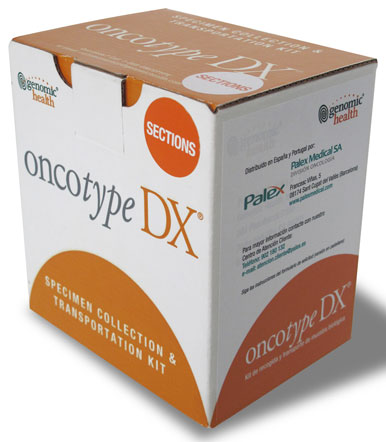Commercially-available prognostic breast cancer tests vary considerably in predicting disease recurrence in patients with ER-positive/HER2-negative breast cancer, particularly during the time — five to 10 years — when half of patients recur, a new study shows.
Combining clinical information, like tumor size and number of positive lymph nodes, with gene expression levels, enhanced the tests’ predictive abilities, particularly in women with lymph node-positive disease.
The study with these findings, “Comparison of the Performance of 6 Prognostic Signatures for Estrogen Receptor–Positive Breast Cancer,” was published in JAMA Oncology.
Women with ER-positive breast cancer usually are offered endocrine therapy after surgery. However, some may remain at high risk for recurrence in distant body locations. For these patients, additional chemotherapy may be beneficial.
Since chemotherapy is linked with uncomfortable side effects, it is critical that women at high risk of recurrence be identified accurately.
There are several commercially-available tests that analyze the cancer’s gene expression, and combine this information with a patient’s clinical information to identify patients for whom chemotherapy may be appropriate.
While these tests are accurate in determining womens’ risk of recurrence in the first five years after treatment, it is still unclear how they perform for longer periods.
Researchers at Queen Mary University of London compared four prognostic tests in their ability to predict overall (0-10 years) and late (5-10 years) recurrence after treatment.
The tests — Oncotype Dx Recurrence Score, PAM50-based Prosigna Risk of Recurrence Score (ROR), Breast Cancer Index (BCI), and EndoPredict (EPclin) — predict the risk for cancer recurrence by measuring the expression of several genes linked to breast cancer.
The team applied the tests in 774 postmenopausal women, average age 64.1 years, who had estrogen-receptor (ER)-positive, HER2-negative breast cancer. This is the most common breast cancer subtype.
“This is the first time that anyone has directly compared the prognostic performance of these four common commercially-available tests. This gives clinicians and oncologists the opportunity to review all the results and decide upon the test they want to use for their breast cancer patients,” study lead author, Ivana Sestak, MD, from Queen Mary’s Wolfson Institute of Preventive Medicine, said in a press release.
“If a woman is deemed high risk of recurrence by any test, the benefit of chemotherapy is greatest. In contrast, if a woman is deemed low risk then endocrine therapy alone will be sufficient and patients could forego chemotherapy and its side effects,” she said.
The results showed that all fours tests provided significant prognostic information for women with node-negative disease for the risk of overall recurrence, i.e., up to 10 years after beginning treatment.
The best prognostic information came from the ROR test, followed by the BCI and EPclin, with all performing better than the older Oncotype test.
However, considering the high-risk period between years 5-10 after the start of treatment, the BCI, ROR, and EPclin tests were the most accurate at stratifying women into low- or high-risk of recurrence.
For women with one to three positive nodes, the tests’ prognostic value was still significant, but weaker than for those with node-negative disease, particularly during years 5-10.
Combining the genetic analysis with clinical data, such as size of a tumor and the number of positive lymph nodes, enhanced the prognostic value, particularly for patients with node-positive disease, researchers said.
“Being able to accurately predict the risk of breast cancer recurrence is even more important now that we are in an era where women are prescribed preventive endocrine therapy for many years. If we were better able to accurately assess a woman’s long-term risk, then some women may be able to end their endocrine therapy after five years. But for those deemed high risk of a late recurrence, continuing their endocrine therapy would be a valuable option,” Sestak said.
Researchers noted, however, these findings are restricted to chemotherapy-free and postmenopausal women.
The U.S. Food & Drug Administration (FDA) approved the ROR test, and the European Society for Medical Oncology recommends Oncotype, ROR and EPclin.

